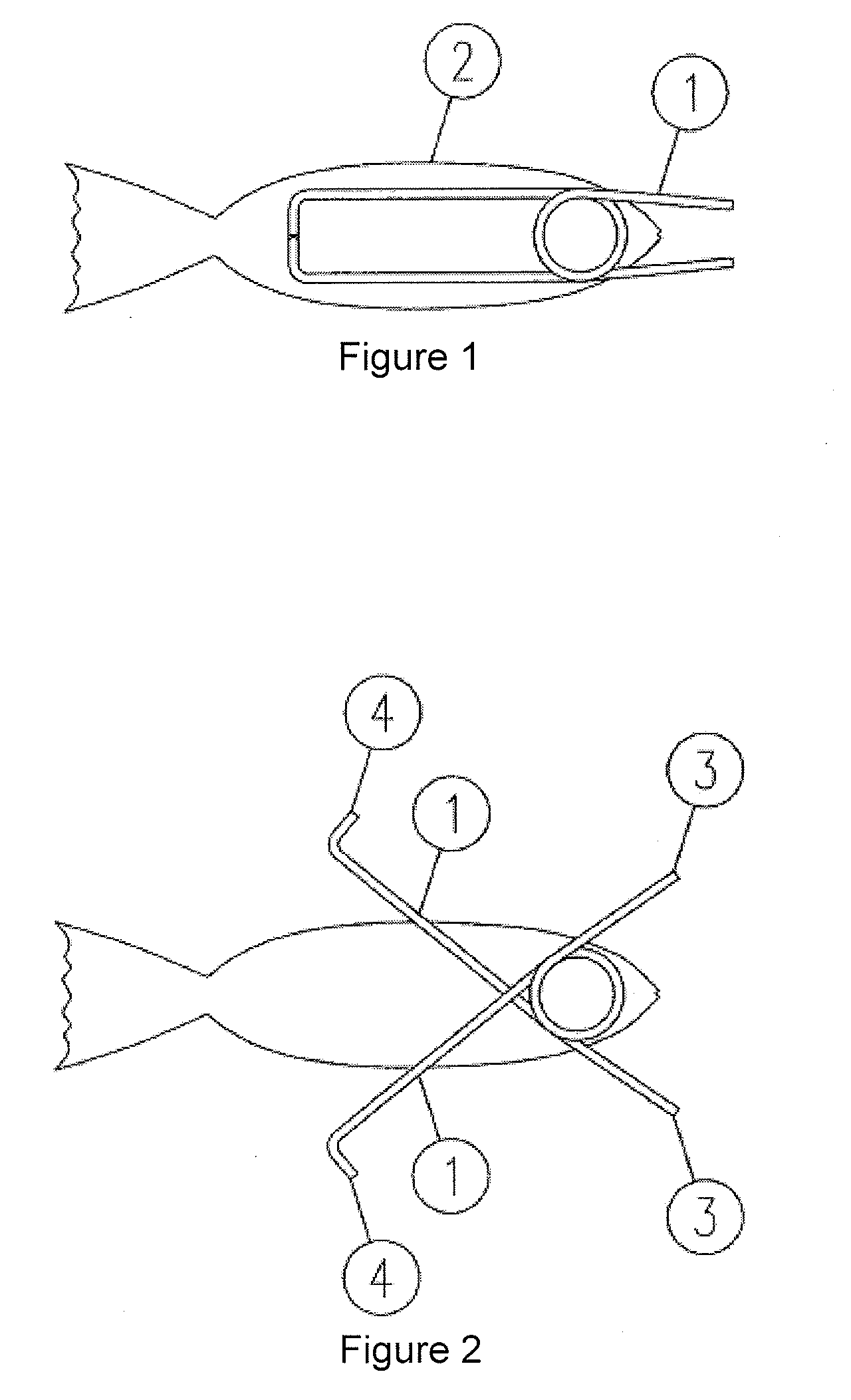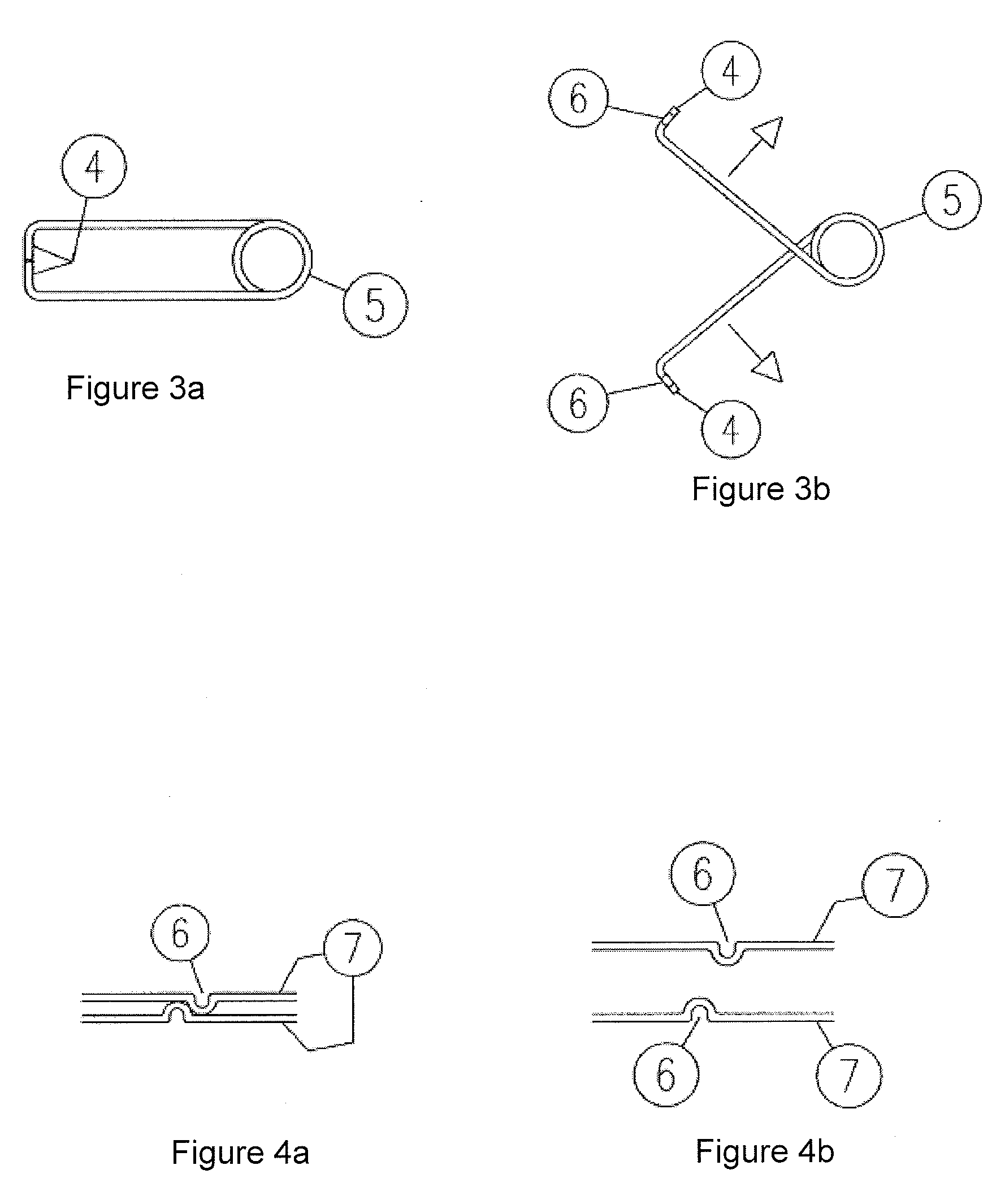Apparatus For Grabbing Fish
a technology for grabbing fish and fish hooks, which is applied in the field of fishing devices, can solve the problems of fish dying, fish being damaged, fish being easily damaged, etc., and achieves the effects of reducing injury, minimizing damage to fish, and reducing difficulty in dislodging
- Summary
- Abstract
- Description
- Claims
- Application Information
AI Technical Summary
Benefits of technology
Problems solved by technology
Method used
Image
Examples
Embodiment Construction
[0025]The invention is generally depicted in many alternative embodiments in FIGS. 1-9, but may be embodied in various other forms. The principles and teachings of the invention, therefore, can be applied to numerous alternative variations. Referring to FIG. 1, there is depicted a side view of a fish grabber or trap I attached to a fish shaped lure 2, or may be attached to any other suitable fish-attracting lure. In this view, the grabber 1 is shown in the loaded state, ready to expand when triggered by a fish. This particular lure is soft-bodied so that the biting fish is able to trigger the grabber 1 when its bite compresses the lure. For clarity, the grabber is located on the side of the lure rather than inside, which is one of many alternative locations.
[0026]Referring to FIG. 2 there is depicted the grabber 1 in the expanded position after it has been triggered by the fish. The grabber 1 may include a coiled spring body 5. The grabber may also include extension handles 3 that e...
PUM
 Login to View More
Login to View More Abstract
Description
Claims
Application Information
 Login to View More
Login to View More - R&D
- Intellectual Property
- Life Sciences
- Materials
- Tech Scout
- Unparalleled Data Quality
- Higher Quality Content
- 60% Fewer Hallucinations
Browse by: Latest US Patents, China's latest patents, Technical Efficacy Thesaurus, Application Domain, Technology Topic, Popular Technical Reports.
© 2025 PatSnap. All rights reserved.Legal|Privacy policy|Modern Slavery Act Transparency Statement|Sitemap|About US| Contact US: help@patsnap.com



